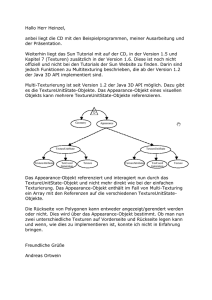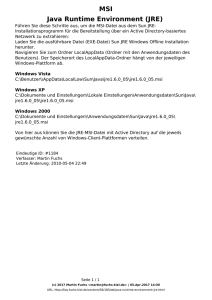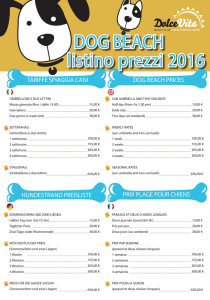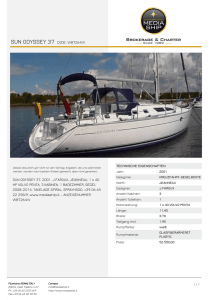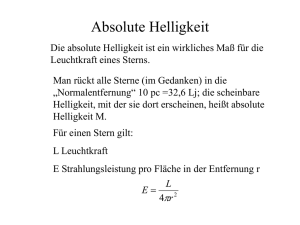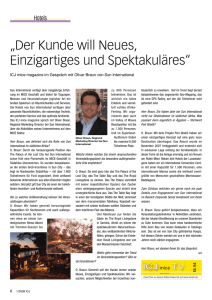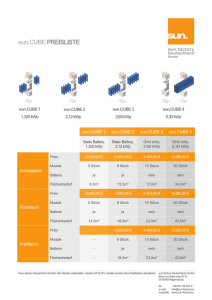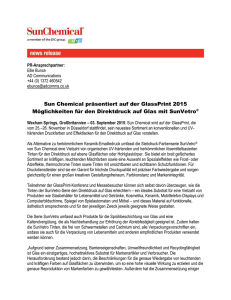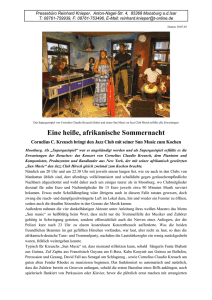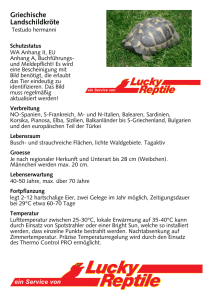Document
Werbung
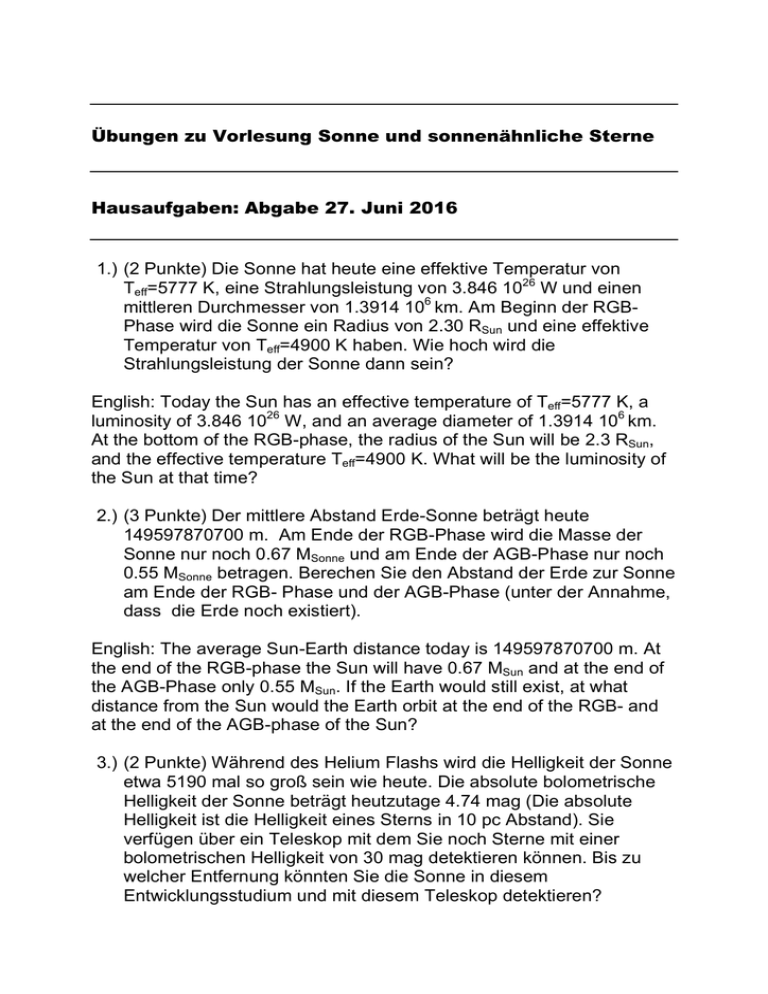
Übungen zu Vorlesung Sonne und sonnenähnliche Sterne Hausaufgaben: Abgabe 27. Juni 2016 1.) (2 Punkte) Die Sonne hat heute eine effektive Temperatur von Teff=5777 K, eine Strahlungsleistung von 3.846 1026 W und einen mittleren Durchmesser von 1.3914 106 km. Am Beginn der RGBPhase wird die Sonne ein Radius von 2.30 RSun und eine effektive Temperatur von Teff=4900 K haben. Wie hoch wird die Strahlungsleistung der Sonne dann sein? English: Today the Sun has an effective temperature of Teff=5777 K, a luminosity of 3.846 1026 W, and an average diameter of 1.3914 106 km. At the bottom of the RGB-phase, the radius of the Sun will be 2.3 RSun, and the effective temperature Teff=4900 K. What will be the luminosity of the Sun at that time? 2.) (3 Punkte) Der mittlere Abstand Erde-Sonne beträgt heute 149597870700 m. Am Ende der RGB-Phase wird die Masse der Sonne nur noch 0.67 MSonne und am Ende der AGB-Phase nur noch 0.55 MSonne betragen. Berechen Sie den Abstand der Erde zur Sonne am Ende der RGB- Phase und der AGB-Phase (unter der Annahme, dass die Erde noch existiert). English: The average Sun-Earth distance today is 149597870700 m. At the end of the RGB-phase the Sun will have 0.67 MSun and at the end of the AGB-Phase only 0.55 MSun. If the Earth would still exist, at what distance from the Sun would the Earth orbit at the end of the RGB- and at the end of the AGB-phase of the Sun? 3.) (2 Punkte) Während des Helium Flashs wird die Helligkeit der Sonne etwa 5190 mal so groß sein wie heute. Die absolute bolometrische Helligkeit der Sonne beträgt heutzutage 4.74 mag (Die absolute Helligkeit ist die Helligkeit eines Sterns in 10 pc Abstand). Sie verfügen über ein Teleskop mit dem Sie noch Sterne mit einer bolometrischen Helligkeit von 30 mag detektieren können. Bis zu welcher Entfernung könnten Sie die Sonne in diesem Entwicklungsstudium und mit diesem Teleskop detektieren? Vergleichen Sie diesen Abstand mit der Entfernung zu M31 (d=0.778 Mpc) und der Entfernung zum Virgo-Haufen (d=11.5 Mpc). English: During the Helium-flash, the luminosity of the Sun is 5190 times larger than today. Today, the absolute bolometric luminosity of the Sun is 4.74 mag (brightness at 10 pc distance). Assume you have a telescope, with which you can detect stars with a bolometric luminosity down to 30 mag. At which distance could you detect the Sun during this evolutionary phase? Compare this number with the distance to M31 (d=0.778 Mpc), and to the Virgo cluster (d=11.5 Mpc). 4.) (3 Punkte) Wie groß ist die Breite (FWHM) einer Spektrallinie in der Sonnenkorona in nm und in Einheiten der Geschwindigkeit (km/s)? Verwenden Sie dazu die Gleichung FWHM = λ/c√(2kT/m), wobei m die Masse des Atoms ist. Nehmen Sie die Wellenlängen der grünen KoronaLinie an bei 530.29 nm. Diese ist eine Linie des Eisens. Nehmen Sie für die Korona eine Temperatur von 106K an. Hinweis: Eisen hat ein Atmogewicht von 55.845 u, und ein u sind 1.660538921×10−27 kg. Die Lichtgeschwindigkeit c ist 299792458 m/s. Die Boltzmann-Konstante ist k=1,3806488 10-23 J/K. English: What is the full-width at half maximum (FWHM) of the „green“ line of the solar corona for a temperature of 106K in nm, and in units of velocity (km/s)? Take the equation FWHM = λ/c√(2kT/m), with m the mass of the atom. The „green“ line is at a wavelength of 530.29nm and is produced by iron (Fe). Iron has an atomic mass of 55.845 u, and one u is 1.660538921×10−27 kg. The speed of light c is 299792458 m/s. The Boltzmann-constant is k=1,3806488 10-23 J/K.
